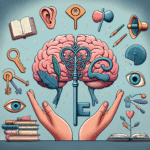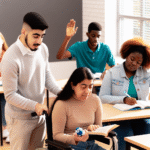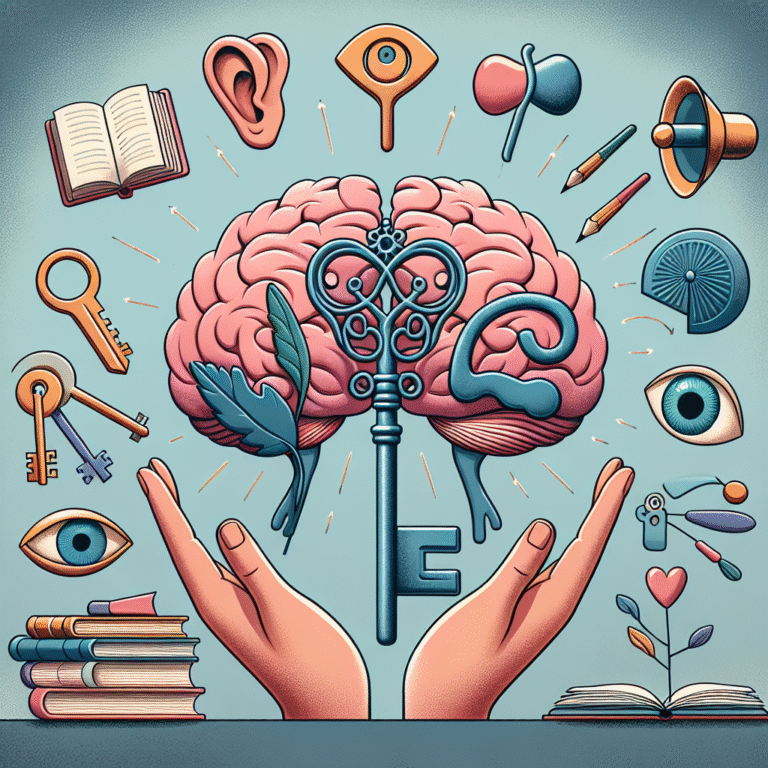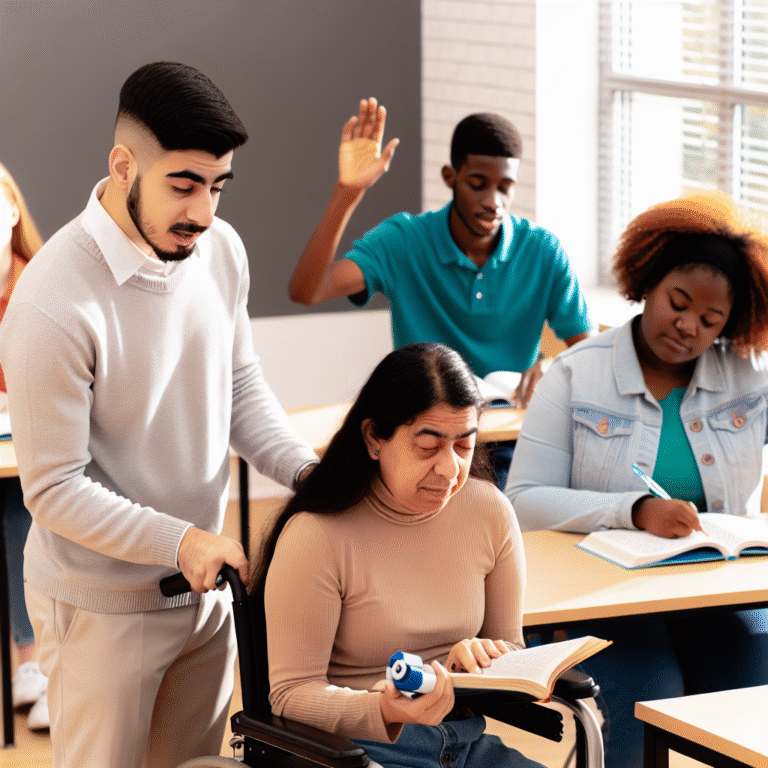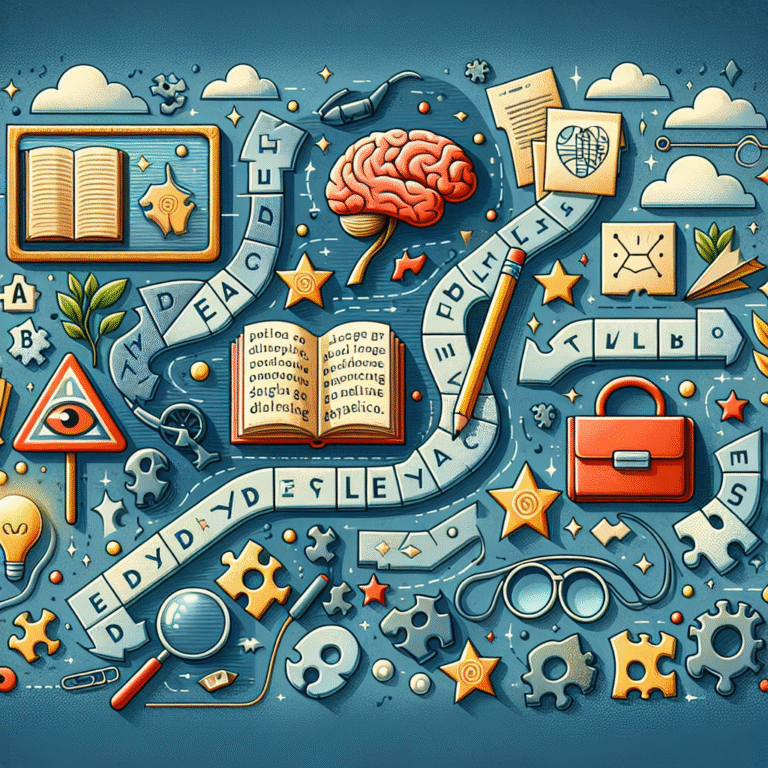
Empowering Every Learner: Essential Strategies for Supporting Students with Learning Disabilities
Introduction
Imagine a classroom where every child feels valued, understood, and capable of achieving their dreams. This vision should be an aspiration and a fundamental goal of our education system. Supporting students with learning disabilities can seem daunting, yet it is a critical endeavour that elevates educational equity and enhances classroom dynamics. Empowering Every Learner: Strategies for Supporting Students with Learning Disabilities provides the framework to help educators, parents, and stakeholders create a nurturing environment for all students. This comprehensive guide endeavours to illuminate the path toward inclusivity, ensuring no learner is left behind.
Understanding Learning Disabilities
Before delving into strategies, it’s crucial to grasp what learning disabilities (LDs) encompass. Learning disabilities are neurological disorders that affect the brain’s ability to receive, process, or communicate information. This can manifest in various ways, notably in areas such as reading (dyslexia), writing (dysgraphia), and mathematics (dyscalculia).
The Importance of Awareness
Awareness is the first step in empowering every learner. Understanding the unique challenges faced by students with learning disabilities allows educators to tailor their approaches effectively. Often, misconceptions surrounding learning disabilities can lead to stigma and summarily undermine a student’s confidence and motivation.
Case Study: Emily’s Journey with Dyslexia
Consider the case of Emily, a bright young student who struggled significantly with reading due to dyslexia. For years, Emily faced frustration in her classroom. Her teachers mistakenly perceived her struggles as a lack of effort rather than a genuine learning disability. However, with the intervention of a dedicated special education coordinator, Emily received personalized strategies and accommodations, allowing her to thrive. By integrating word prediction software and providing extended time on assessments, Emily transformed from a hesitant reader into an enthusiastic learner. This illustrates the profound impact that tailored support can have on a student’s educational journey.
Strategies for Supporting Students with Learning Disabilities
We need to implement effective strategies that accommodate diverse learning needs to empower every learner. Below are essential pillars that uphold the educational experience for students with learning disabilities.
1. Differentiated Instruction
Differentiated instruction entails adapting teaching methods and resources to meet the diverse needs of learners. This approach recognises that students’ readiness levels, interests, and preferred learning modes vary.
Essential Practice: Use varied teaching styles (visual, auditory, and kinesthetic) to cater to different learning preferences.
Table 1: Differentiation Strategies
| Learning Style | Strategy |
|---|---|
| Visual | Use graphic organizers and visual aids |
| Auditory | Incorporate discussions and audio resources |
| Kinesthetic | Facilitate hands-on learning and activities |
Case Study: Jack’s Visual Learning
Jack, a student with a nonverbal learning disability, benefitted immensely from differentiated instruction. His teacher employed graphic organisers and provided visual aids during lessons, significantly improving his ability to understand and retain complex information. Catering to his learning style soared Jack’s confidence, illustrating the importance of embracing diverse instructional strategies.
2. Collaborative Learning Environments
Creating a collaborative learning environment encourages peer support and fosters a sense of belonging among students. Group activities allow learners to engage with one another, share strengths, and tackle challenges collectively.
Key Practice: Pair students with and without learning disabilities in cooperative learning groups.
Case Study: Group Dynamics with Mia
Mia, a student with ADHD, often found herself overwhelmed during individual tasks. However, upon transitioning to collaborative group projects, she thrived. Her peers helped keep her focused, while her creativity flourished in a team setting. This case underscores the essential nature of collaboration in empowering students, demonstrating that learning can be amplified through shared experiences.
3. Assistive Technology
In today’s tech-driven world, assistive technology has become an invaluable ally for students with learning disabilities. Text-to-speech software, digital graphic organizers, and interactive learning applications can drastically improve accessibility.
Key Practice: Introduce assistive technology early to familiarise students with practical learning tools.
Chart 1: Examples of Assistive Technology
| Tool | Purpose |
|---|---|
| Text-to-Speech Software | Assists with reading and comprehension |
| Graphic Organizer Apps | Aids in brainstorming and structuring ideas |
| Interactive Learning Platforms | Engages students with gamified learning |
Case Study: Tom’s Success with Technology
Tom, who struggles with dysgraphia, finds himself often frustrated by traditional writing tasks. By utilizing speech recognition software, Tom is able to express his ideas freely without the hindrance of handwriting difficulties. This transformation not only improves his written communication but also boosts his confidence immensely. Tom’s experience highlights how technology can empower disabled learners to overcome barriers.
4. Individualized Education Plans (IEPs)
An IEP is a legally binding document tailored to meet the unique educational needs of a student with disabilities. It outlines specific goals, accommodations, and services required for the student’s success.
Essential Practice: Regularly meet with educators, parents, and specialists to ensure the IEP is updated and relevant.
Case Study: Alex’s Tailored Plan
Alex, a high school student with a learning disability, benefitted from a comprehensive IEP that included extended time for tests, modified assignments, and access to a learning specialist. Regular follow-ups demonstrated a significant improvement in his academic performance and engagement. Alex’s case exemplifies how IEPs can effectively empower learners by accommodating individual needs and promoting success.
5. Fostering an Inclusive Classroom Culture
An inclusive classroom culture is foundational in empowering students with learning disabilities. Educators must cultivate an environment that champions diversity, acceptance, and respect.
Key Practice: Implement activities and discussions that encourage student empathy and understanding.
Case Study: Building Empathy in Classrooms
At Lincoln Elementary, a teacher initiated a monthly “Diversity Day” where students share their unique experiences and challenges. Through storytelling and various activities, students gained insight into each other’s struggles and strengths. This initiative fostered a culture of inclusivity, allowing students with learning disabilities to feel more accepted and connected.
6. Parental Involvement and Education
Parents play a crucial role in supporting their children’s educational journeys. Providing them with the tools and knowledge necessary to advocate for their children can significantly improve student outcomes.
Key Practice: Offer workshops and resources to educate parents about learning disabilities and effective advocacy strategies.
Case Study: Empowering Parents
A local school district launched a series of workshops to educate parents about supporting their children with learning disabilities. One participant, Sara, learned about her child’s rights and how to collaborate effectively with teachers. As a result, Sara became an advocate for her son’s needs, resulting in improved communication and support at school. This case illustrates the power of parental involvement in fostering an inclusive learning environment.
Conclusion
Supporting students with learning disabilities is not just an educational responsibility but an opportunity to cultivate a more equitable and enriched learning environment for all. Empowering every learner hinges on the strategies outlined in this article—differentiated instruction, collaborative learning, technology integration, IEPs, inclusive cultures, and active parental involvement.
As we reflect on the inspiring stories presented, let them serve as a rallying cry to educators, parents, and community members: every student deserves the chance to reach their fullest potential. The power to change lives lies within our actions; together, we can create classrooms that resonate with understanding, accommodation, and resilience.
FAQs
By incorporating these strategies and insights into our educational practices, we can truly empower every learner, ensuring that all students—regardless of their challenges—are equipped to achieve success.
